Reactive Distillation Design and Control
Chapter1: Introduction 1.1 History 1.2 Basics of Reactive Distillation 1.3 Neat Operation versus Excess Reactant 1.4 Limitations 1.5 Scope 1.6 Computational Methods 1.7 References PART 1: STEADY-STATE DESIGN OF IDEAL QUATERNARY SYSTEM Chapter 2: Parameter Effects 2.1 Effect of Holdup on Reactive Trays 2.2 Effect of Number of Reactive Trays 2.3 Effect of Pressure 2.4 Effect of Chemical Equilibrium Constant 2.5 Effect of Relative Volatilities 2.6 Effect of Number of Stripping and Rectifying Trays 2.7 Effect of Reactant Feed Location 2.8 Conclusion Chapter 3: Economic Comparison of Reactive Distillation with a Conventional Process 3.1 Conventional Multi-Unit Process 3.2 Reactive Distillation Design 3.3 Results for Different Chemical Equilibrium Constants 3.4 Results for Temperature-Dependent Relative Volatilities 3.5 Conclusion Chapter 4: Neat Operation versus Using Excess Reactant 4.1 Introduction 4.2 Neat Reactive Column 4.3 Two-Column System with Excess B 4.4 Two-Column System with 20% Excess A 4.5 Economic Comparison 4.6 Conclusion PART 2: STEADY-STATE DESIGN OF OTHER IDEAL SYSTEMS Chapter 5: Ternary Reactive Distillation Systems 5.1 Ternary System without Inerts 5.2 Ternary System with Inerts 5.3 Conclusion Chapter 6: Ternary Decomposition Reaction 6.1 Intermediate Boiling Reactant 6.2 Heavy Key Reactant with Two Column Configuration 6.3 Heavy Key Reactant with One Column Configuration 6.4 Conclusion PART 3: STEADY-STATE DESIGN OF REAL CHEMICAL SYSTEMS Chapter 7: Steady-State Design for Acetic Acid Esterification 7.1 Reaction Kinetics and Phase Equilibrium 7.2 Process Flowsheets 7.3 Steady-State Design 7.4 Process Characteristics 7.5 Discussion 7.6 Conclusion Chapter 8: Design of TAME Reactive Distillation Systems 8.1 Chemical Kinetics and Phase Equilibrium 8.2 Component Balances 8.3 Effect of Parameters on Reactive Column 8.4 Pressure-Swing Methanol Separation Section 8.5 Extractive Distillation Methanol Separation Section 8.6 Economic Comparison 8.7 Conclusion Chapter 9: Design of MTBE and ETBE Reactive Distillation Columns 9.1 MTBE Process 9.2 ETBE Process 9.3 Conclusion PART 4: CONTROL OF IDEAL SYSTEMS Chapter 10: Control of Quaternary Reactive Distillation Columns 10.1 Introduction 10.2 Steady-State Design 10.3 Control Structures 10.4 Selection of Control Tray Location 10.5 Closedloop Performance 10.6 Using More Reactive Trays 10.7 Increasing Holdup on Reactive Trays 10.8 Rangeability 10.9 Conclusion Chapter 11: Control of Excess-Reactant System 11.1 Control Degrees of Freedom 11.2 Single Reactive Column Control Structures 11.3 Control of Two-Column System 11.4 Conclusion Chapter 12: Control of Ternary Reactive Distillation Columns 12.1 Ternary System without Inerts 12.2 Ternary System with Inerts 12.3 Ternary A B+C System: Intermediate Boiling Reactant 12.4 Ternary A B+C System: Heavy Reactant with Two-Column Configuration 12.5 Ternary A B+C System: Heavy Reactant with Single Column PART 5: CONTROL OF REAL SYSTEMS Chapter 13: Control of MeAc/ EtAc/IPAc/BuAc/AmAc Systems 13.1 Process Characteristic 13.2 Control Structure Design 13.3 Extension to Composition Control 13.4 Conclusion Chapter 14: Control of TAME Plantwide Process 14.1 Process Studied 14.2 Control Structure 14.3 Results 14.4 Conclusion Chapter 15 Control of MTBE and ETBE Reactive Distillation Columns 15.1 MTBE Control 15.2 ETBE Control PART 6: HYBRID AND NON-CONVENTIONAL SYSTEMS Chapter 16: Design and Control of Column/Side- Reactor Systems 16.1 Introduction 16.2 Design for Quaternary Ideal System 16.3 Control of Quaternary Ideal System 16.4 Design of Column/Side-Reactor Process for Ethyl Acetate System 16.5 Control of Column/Side-Reactor Process for Ethyl Acetate System 16.6 Conclusion Chapter 17: Effect of Boiling Point Rankings on the Design of Reactive Distillation 17.1 Process and Classification 17.2 Process Configurations 17.3 Relaxation and Convergence 17.4 Results and Discussion 17.5 Conclusion Chapter 18: Effects of Feed Tray Locations on the Design and Control of Reactive Distillation 18.1 Process Characteristics 18.2 Effects of Relative Volatilities 18.3 Effects of Reaction Kinetics 18.4 Operation and Control 18.5 Conclusion APPENDIX A1. Reference A2. Catalog of Types of Real Reactive Distillation Systems
{{comment.content}}
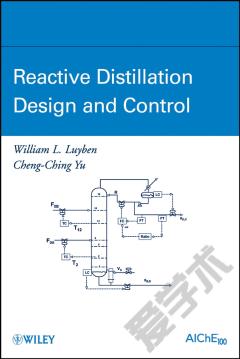
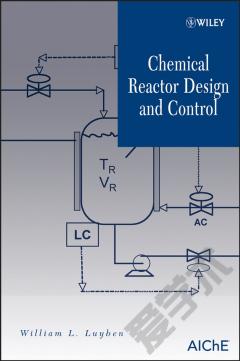
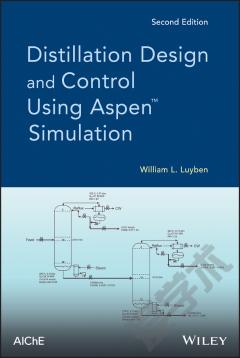
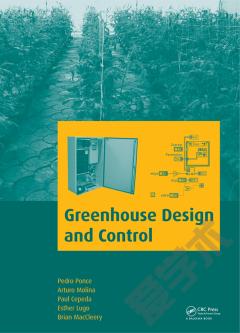
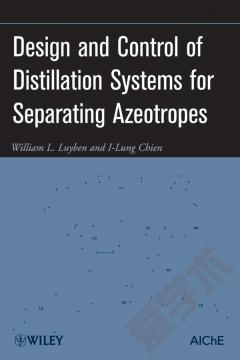



 京公网安备 11010802027623号
京公网安备 11010802027623号